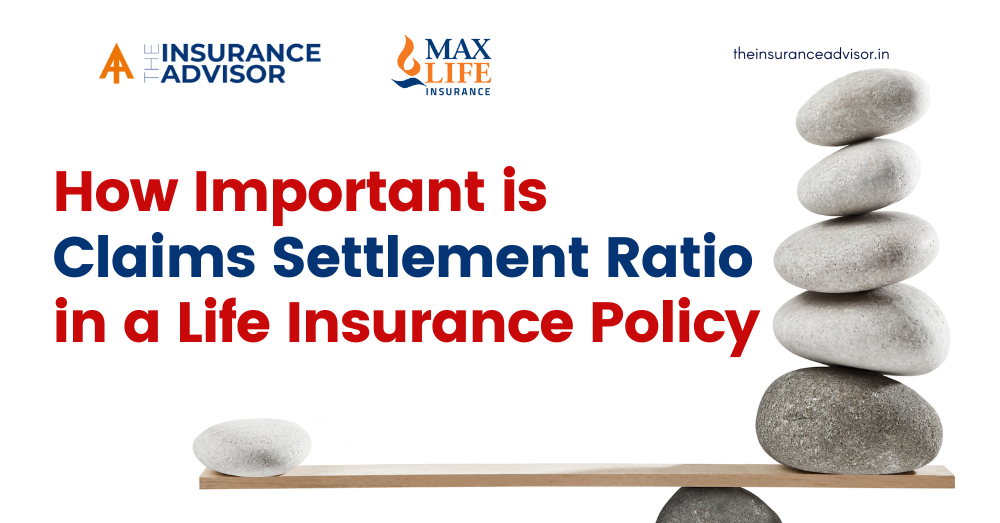The settlement of claims by insurance companies is one of the main worries associated with the acquisition of an insurance policy. The insurance regulation in India requires the “claims settlement ratio” as a trustworthy metric in public disclosures. This ratio aids in deciding whether or not the life insurer and the insurance policy are the best options for you.
Here are the definition, calculation, and implications of a life insurance claims settlement ratio for your life insurance policy.
What Is Claims Settlement Ratio?
A mathematical statistic known as a “claims settlement ratio” or “claims paid ratio” helps to comprehend the number of claims paid relative to the number of claims received by the insurer. This ratio aids in determining the insurer’s dedication to settling insurance claims. A larger ratio clarifies the insurer’s claims-paying effectiveness and assures the family that there are more chances the company will settle the claim after the unfortunate passing of the insured.
The “Claims Settlement Ratio”: How Is It Calculated?
By dividing the total number of insurance claims paid by the total number of insurance claims received by the insurance company, the “claims paid ratio” is determined. The claim paid ratio for the insurance company would be (992/1000)% or 99.2% in a financial year, for instance, if a life insurance company receives 1,000 claims in a year, of which it pays 992 and either rejects or doesn’t make a decision (for example: investigations underway) on the remaining claims.
It’s critical to keep in mind that the ratio encompasses the whole corporate product line, including endowments, ULIPs, and term plans, among others.

What Can You Learn About the Life Insurer from the “Claims Settlement Ratio”?
The “claims paid ratio” depicts the manner in which a life insurer settles claims. A high ratio vs a low “claim settlement ratio” suggests that the underwriting and claims process is robust.
The main goal of a life insurance policy is to give families financial security in the event that a breadwinner passes away suddenly. When acquiring an insurance policy from an insurer with a high claim-paid ratio, one can feel secure knowing that the claims process will probably be simple, convenient, and open when necessary.
Your loved ones can anticipate a simple disbursement of the life insurance benefit in the event that the insured event—a critical illness or death—occurs while the policy is still in effect.
A company’s “claims paid ratio” indicates how trustworthy it is, with a higher ratio being more trustworthy than a lower ratio. A payment ratio of more than 98% can be deemed favourable when comparing data. The top three life insurers in India have paid ratios of more than 99%, while one-third of all life insurers in the country have paid ratios of more than 98%.
Step-by-Step Claims Settlement Process Description
A life insurance company’s claim-settlement procedure consists of the following three steps:
Claim filing and document delivery
The claim settlement process used by insurance must be easy to understand. Normally, you should be able to submit a death claim via the insurer’s website, helpline, email, branch office, or central office.
Claim assessment
The better, the faster the average turnaround time for evaluation. Based on the details in the supporting documentation, all asserted claims are investigated and resolved. Therefore, it is advised to give all the necessary information for quicker and more efficient claim processing.
Decision and resolution of claims
After carefully examining and approving the provided documentation, a life insurance company decides on the final settlement. Upon receipt of the required documentation and explanations, the insurer is required by law to settle all valid claims within 30 days.
The claim may be resolved in up to 120 days if more investigation is necessary due to the circumstances. Insurance claimants must keep in mind that when an insurance company assigns a dedicated “claims relationship officer” to assist the claimant at various stages of the claims process, the claimant must utilise their services to make the entire process simpler and faster.
When Are Claims For Life Insurance Rejected?
There is little chance that an insurance policy with explicit information will be denied. However, in the following situations, an insurance provider may decline to settle a claim.
Details that are incorrect or lacking
Avoid misleading the agent or the firm by providing false or incomplete information about crucial factors like prior policies (issued/applied/rejected), claims, age, income, and lifestyle (smoking/drinking), among others.
There is no harm in telling your insurance provider specifics about your current life insurance policy. Misrepresenting any personal data can be deemed fraudulent and can result in the cancellation of insurance benefits in addition to being adverse to the claims settlement.
Hiding one’s medical history
The non-disclosure of health-related information about a person is the most frequent cause of claims rejection. factors such hiding details about crucial medical illnesses, surgeries, and operations are now present, among others. These elements may result in the denial of life insurance claims if they are discovered at the time of settlement. Therefore, it is important to declare them when purchasing the coverage because doing so affects the premium you will have to pay.
Details on the nominee are lacking
If you don’t change the nominee’s information, the settlement procedure can take longer. The insurance may need additional paperwork in this situation to demonstrate legal proof of titles, such as a succession or legal heir certificate. If the candidate is a minor, information on their guardian should also be recorded in the insurance file.
Inconsistent premium payments
Only claims for active insurance plans are fully compensated. Regular premium payments on the insurance coverage assist prevent lapses. Monthly premium mode plans are given a 15-day grace period, while all other premium payment frequencies are given a 30-day grace period.
Some policy contracts also give you the choice to convert a lapsed policy into a reduced paid-up policy, in which the sum insured is proportionately reduced to the number of premiums paid as opposed to the total amount of premiums due during the policy’s duration. Set up a direct auto-debit facility connected to your bank account to pay the renewal premium in order to prevent any gaps brought on by time limitations.
However, if you continue to fall behind on your premium payments, check with the insurance provider about how to have your policy reinstated. To reinstate the insurance benefits, you might need to pay the appropriate late penalties or interest in addition to filing new health declarations.
What can claimants do to ensure a quick settlement of their claims?
A claimant must make sure of the following for a quick claim settlement process:
- After the covered event has occurred, it is best to notify the insurance company as soon as possible.
- Make sure you provide all necessary claim-related documentation. For a complete list of required papers, you can get in touch with your agent, a company representative, or the corporate website.
- Complete the claim forms completely, honestly, and with care.
- Make sure to provide your most recent contact information, including your address, phone number, and email address. To finish the verification procedure, the company may start additional documents and information verification based on insurance company policies.
Points to Consider Regarding Hygiene Before Purchasing a Life Insurance Policy
Before purchasing a policy, it is best practise to take into account a life insurance company’s “claims settlement ratio” and ease of claims processing; the higher the ratio, the more likely it is that your future claim will be paid by the business.
Every year, the Insurance Regulatory & Development Authority of India (IRDAI) releases a ratio of all the insurance providers in India; the website has the details. Before choosing an insurer, look through this information, but do not use it as your sole criterion for selection.
You should request any information from the insurance provider regarding their claims procedure and “claims paid ratio” as a savvy consumer. The entire purpose of purchasing an insurance policy is defeated if the insurance provider refuses to pay the claim throughout the policy term.
Similarly to this, being open and honest about your medical history, personal habits like smoking, income, and educational information will help to assure a quick resolution of your claim. This will guarantee that your family won’t run into any issues while submitting a claim to the insurer while you’re away.
